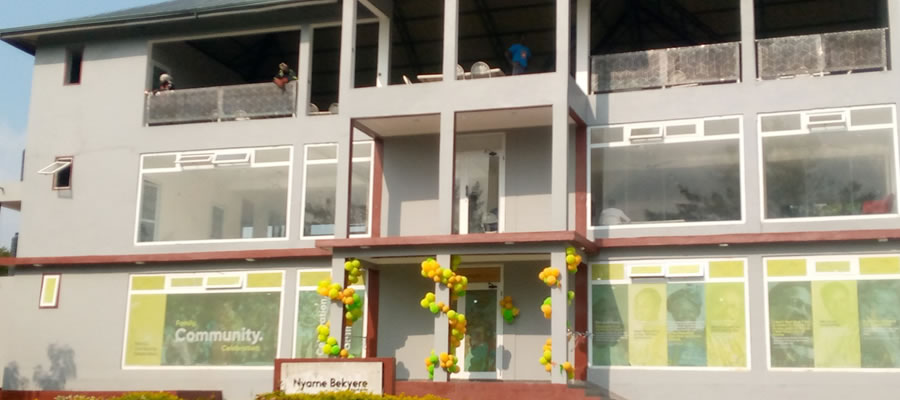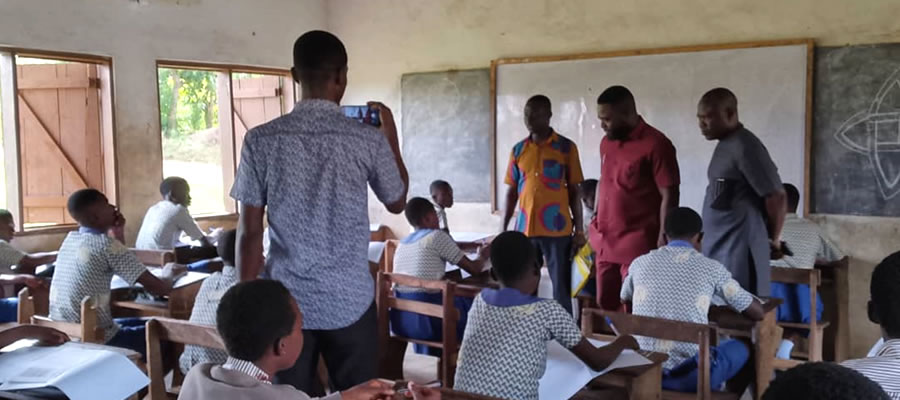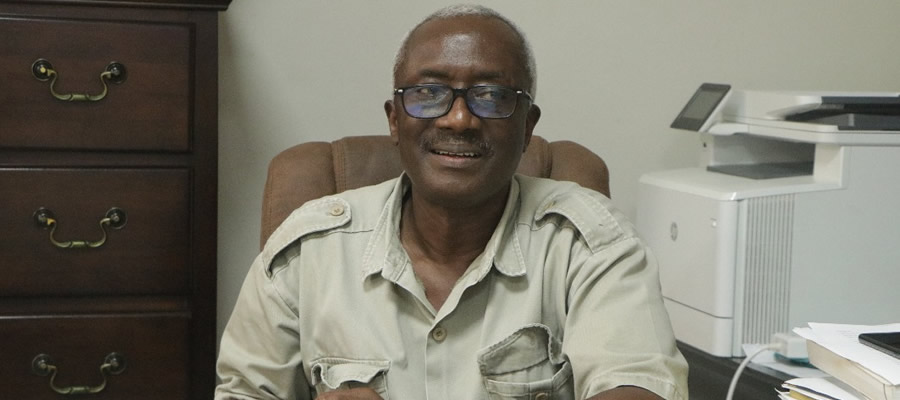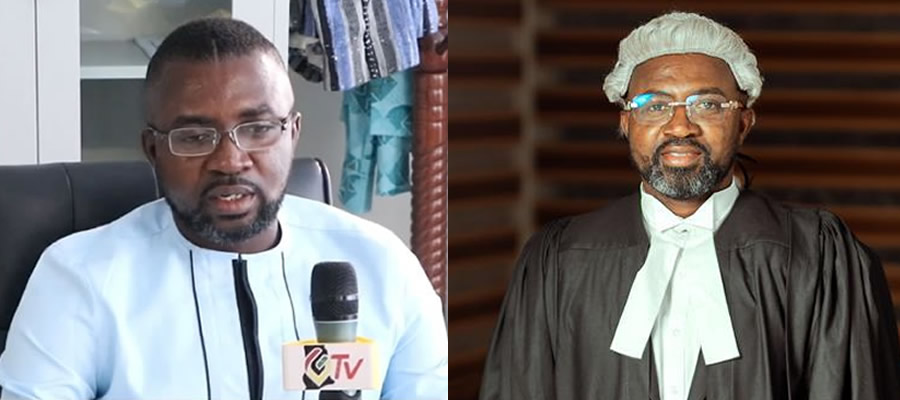

Physical and Natural Environment
Location
The Akuapem North Municipality is located in the South-eastern part of the Eastern Region and is about 58km from Accra, the capital city of Ghana. It is bounded to the north and north-east by the Okere District Assembly, to the North-west by the New Juaben Municipality, South-east by the Shai Osudoku District, in the Greater Accra Region, to the South by the Akuapem South District and to the South-west by Suhum Municipality. It lies between 5°58'41"N 0°05'28"W and 5.978°N 0.091°W of the equator. The Municipality covers a total land area of 450 square kilometers representing about two point three percent (2.3%) of the entire land mass of the Region. It has 169 settlements with Akropong as its district capital.
The location of the Municipality is very strategic considering its proximity to both the National and the Regional capitals, i.e. Accra and Koforidua respectively. The closeness allows socio-economic interaction between the Municipal and the two capitals in terms of trade, movement of, and access to goods, services and people. This interaction impacts positively on the development of the economy of the Municipality in terms of trade, tourism, housing and employment generation.
In the same vein, it also has adverse impact on social development especially cross-city social vices like theft, drug abuse, armed robbery, internet fraud popularly called ‘sakawa’. The implication of all these on the development of the Municipality is that it has led to increase in land prices, increase in rent on houses, as well as attracting investors to invest in areas like estate development, entertainment centers, energy (gas and fuel), hotels, farming etc. This is resulting in most arable lands for agriculture being lost to housing and other physical developments.
Figure 1.1 Akuapem North in Regional context
Topography and Drainage
The topography of the Municipality is largely characterized by a stretch of mountains called the Akuapem Range with heights ranging between 381 meters and 488 meters and its highest peak reaching 500metres situated at Amanokrom close to a natural water tank. Its lowest point is approximately, 152 meters. The rivers Brump, Ponpon and Aponapong and their tributaries form the main drainage channels for the Larteh-Mampong geographical area while the Aboabo, Nsaki and Yensi streams drains the North-west segment of the Municipal’s natural landscape.
The nature of the topography somehow negatively affects farming because sophisticated machines such as farm tractors for ploughing and tilling could not be used on majority of the farm lands except the use of simple farm inputs such as hoes and cutlasses resulting in subsistent farming by the majority. The topography also makes construction of physical infrastructure very tedious and expensive.
Geology and Soil
There are two (2) main types of rocks of pre-Cambrian age found in the Municipality. These are the Togo sandy shales series and the Birimian series. The Birimain series are found in Adawso area comprising of benisses and schist with granite and pegmatites, which are metamorphic rocks. The Togo series on the other hand are found in the north-east to the south-west from the Senya-Beraku part of the Akuapem Range, west of Accra.
Rock stones, phythomites and sandy shales are found in the Kwamoso area, Manye-Adamso road near mile 36. The area stretching from the north-west slope of the Akuapem Range to the Nyensi and the Nsaki Valleys are covered by the sand series whiles phylites are found in stream valleys notably the Bump Valleys near Larteh. Quarzites also cover greater part of the Akuapem Range, Mampong, Tutu, Amanokrom and Larteh among others. The nature of the soil supports farming activities and the presence of these rocks also allows for stone quarry activities which are economic activities and major source of income to the people in the Municipality.
Vegetation
The Municipality lies within the semi-deciduous forest zone. Most of the trees shed their leaves during the dry season. The area has broken forest on most hill tops, secondary forest on slopes and valleys, shrubs and bushes along the motor roads and main footpaths, thickets on the slopes facing the Accra Plain and forest reserves.
There are two major forest reserves, forest patches and sacred groves scattered all over. Notable ones can be found at Mampong, Gyafiase, Larteh Junction, Bankana near Tutu, Akropong, Obosomase, and Saforo. However, crude farming practices and other activities such as real estate development and illegal chain saw operations have resulted in the natural vegetative cover being degraded.
Biodiversity, Climate Change, Green Economy and Environment
The environment consists of water bodies, minerals, flora and fauna which are being affected by activities of human beings. The quality of both the built and the natural environments is vital for long-term growth and development. Increased production can be meaningful when it occurs in a well-managed, efficient, safe and healthy built environment. On the other hand, protecting the natural environment to prevent deforestation, land degradation and loss of ecosystems is very important. It is obvious that every development project has its environmental implications and to resolve these issues a Strategic Environmental Assessment tool has been introduced into development planning to improve or maintain the green economy. Water bodies are not left out, they are drying up because of negative farming practices.
The UNEP (2011) defined green economy as ‘an economy that results in improved human well-being and social equity, while significantly reducing environmental risks and ecological scarcities’. It can be thought of as an alternative vision for growth and development which can generate improvement in people’s lives in consonance with sustainable development. Green economy also means growing the economy of the Municipality in ways that would benefit, ensure social justice and equity that would not sacrifice the environment. Over the years, the Assembly has adopted and adapted both local and external strategies to mainstream green economy and climate change issues into it development programmes to achieve sustainable development. These strategies included:
• Encouraged good indigenous environmental protection practices
• Adopted and adapted relevant national and international strategies
• Protected water bodies and their catchment areas, farm lands, protected areas
• Encouraged sustainable socio-economic livelihoods among locals
• Sensitized residents on environmental issues and disasters
• Improved waste management and disposal systems (by introduction of house-to-house refuse collection)
Date Created : 2/12/2020 4:17:53 AM













 facebook
facebook
 twitter
twitter
 Youtube
Youtube
 +233 593 831 280
+233 593 831 280 0800 430 430
0800 430 430 GPS: GE-231-4383
GPS: GE-231-4383 info@ghanadistricts.com
info@ghanadistricts.com Box GP1044, Accra, Ghana
Box GP1044, Accra, Ghana